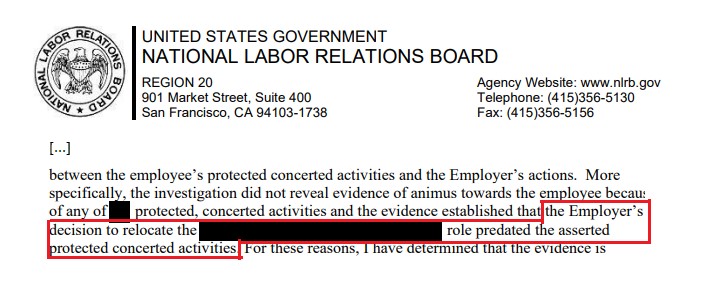Someone quit their job at Google.
It’s not the kind of news that normally makes the front page of the New York Times‘ Business section. But then, New York Times handling of news related to Israel isn’t normally… normal.
This news, this particular resignation, is meant to tell us a larger story. The headline gives the basics: “Google Employee Who Played Key Role in Protest of Contract With Israel Quits.”
But it’s just below the headline that we learn the story is really about, and why the paper bothered running a piece titled, more or less, “Person Quits.” The subhead explains: “The worker said the company had tried to retaliate against her activism opposing a deal with the Israeli military, while co-workers argued the company had an anti-Palestinian bias.”
There it is. The piece is meant to promote a staple of anti-Israel activism: the charge that dark forces silence “pro-Palestinian” advocacy. The story is a parable about those forces and their victims.
It is also, apparently, a fable. The decision to move the position was made prior to Koren’s activism, a third-party investigation found. Incredibly, the New York Times concealed this finding from readers, though it undermines the central premise of the employee’s — and the newspaper’s — story.
That story goes as follows: Google employee and anti-Israel activist Ariel Koren organized opposition to Project Nimbus, Google’s sale of a cloud computing services to Israel. In retaliation for her activism, Google moved her position, which had been based in Mexico City and after the pandemic in San Francisco, to São Paulo, Brazil. Koren took her case to the National Labor Relations Board, the federal body that protects the right of employees to organize and combats unfair labor practices. The NLRB ruled against Koren. The New York Times comes to the rescue.
Times reporter Nico Grant devoted most of his 1800-word piece to relaying, in detail and at length, Koren’s case. About the NLRB ruling, though, hardly 20 words were written: “Google and the National Labor Relations Board investigated her complaint and found no wrongdoing,” wrote Grant. And later again: “the N.L.R.B. … dismissed the case for insufficient evidence.”
But beyond finding that there was no evidence of retaliation, the NLRB investigation also uncovered specific, affirmative evidence that Koren’s belief is unfounded. The Board’s dismissal letter notes “the evidence established that the Employer’s decision to relocate the … role predated the asserted protected concerted activities.”
It goes without saying that this finding by the NLRB is relevant to the story, and necessary for anyone hoping to assess the charge that Google’s move was retaliation for Koren’s activism.
But the Times hid it from readers. The reporter worked hard to made Koren’s case, but hid Google’s case — even though the latter was supported by the findings of third-party investigation by an employee-rights body.
And when contacted by CAMERA, editors insisted there was no need to include even a sentence about the specific, and fundamental, finding.
So why does the newspaper find relevant, for example, Koren’s claim that “a supervisor in Brazil told her that employees in São Paulo were working from home because of the pandemic,” but not the NLRB’s finding that Google’s decision predated her activism?
And why, in other stories about the NLRB, does the Times go into great detail about what underpinned the body’s findings — see, e.g., here and here — but in this story only share the conclusion in the tersest possible terms?
Readers would be forgiven for concluding that the reason for the omission is that the newspaper is engaged in advocacy journalism — advocacy for both the employee’s dubious claims, and for the anti-Israel talking point that it’s meant to promote.

